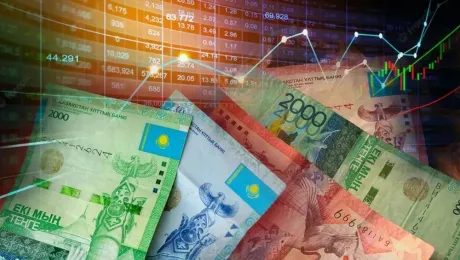The COVID-19 outbreak, which has put parts of China under lockdown and brought productivity in rural areas to standstill, prompted speculation on whether the country’s goal of eliminating poverty by the end of 2020 will be undermined. But the government authorities and development experts have expressed optimism about China’s ability to accomplish total poverty alleviation.
In many parts of China, the widespread epidemic has hindered workflow, disrupted the operations of industries and postponed anti-poverty projects, posing new challenges to China’s campaign to eradicate absolute poverty in 2020.
“Also, the lockdown in many places has blocked transporting of commodities. Now we are short of food and daily necessities,” Xu Yongquan, a farmer in Dongwan village of Hubei’s Xiantao city, told the Global Times.
Quarantine woes
Yu Shaoxiang, an expert on social security and poverty relief legislation at the Chinese Academy of Social Sciences, told the Global Times that battling poverty in rural China and improving livelihoods of rural population have been severely affected by some extreme lockdown measures that authorities in rural areas had put in place.
Since the beginning of the epidemic, many local governments across China imposed extreme measures, such as blocking roads and setting up improvised fences, to cut off connection from outside and prevent outsiders from stepping into lands under their management.
At the end of January, the Ministry of Transport issued a notice opposing the lockdown of transportation to ensure people get daily necessities.
Yu noted that large numbers of the poor and rural residents rely on the breeding industry, and they were severely impacted by the epidemic.
“I have learned that a poultry farmer had to bury tens of thousands of chickens alive as he had nowhere to buy poultry feeder due to the lockdown of the city. Tangerine and strawberry farmers are watching their produce rotting away because there is no way to sell them,” Yu said.
“Also, the embattled basic-level officials are too preoccupied with containing the outbreak to be informed of poverty alleviation situation,” Yu said.
This would mean that most agricultural workers will miss key opportunities in spring to plant crops, get supplies and trade livestock and produce, said Yu.
Jiang Ru, a crayfish farmer in a village in Qianjiang, Central China’s Hubei Province told the Global Times he is worried about this year’s crayfish production.
“The crayfish normally start breeding this season, and we would normally already have started working in the crayfish field right now,” said Jiang. "However, now we are not allowed to go out because of the coronavirus. Preventing the virus prevails against all other tasks."
Jiang estimated that if the spread of the virus is not subdued before the end of March, the whole production and supply chain of crayfish will be heavily dented.
Hubei produces almost half of China’s crayfish, a favorite of many Chinese foodies. Qianjiang produces more than half of Hubei's crayfish.
Committed course
By the end of last year, there were still nine provincial regions that each had over 100,000 people living under the poverty line.
We were only “one more mile” away from reaching the goal by the end of 2019, said Yu, citing statistics that 95 percent of people were estimated to have been lifted out of poverty by the end of last year.
Experts noted most people who are still in poverty live in the western part of China where ethnic minority groups are highly concentrated.
However, despite mounting pressure, Chinese observers said the country will make unremitting efforts to achieve the goal of building a moderately prosperous society in all respects, including lifting all those living under the country’s poverty line.
The central government has adopted various measures to make sure the goal could be accomplished as planned, said Yu, noting that while the epidemic may have cast shadow on poverty alleviation work, the goal would not to be changed.
The government of Northwest China’s Xinjiang Uygur Autonomous Region ramped up measures to resume production amid the outbreak so workers wouldn’t be affected by a shortage of basic necessities and lack of income.
A clothing factory in Hotan, Xinjiang issued measures to ensure “safe work resumption during the outbreak”. This included assigning special correspondents to collect and provide timely feedback of problems encountered during resuming production, and asking employees to avoid eating or standing together.
Wang Hongwei, a professor at Renmin University of China's School of Public Administration and Policy in Beijing, said that although resuming production may add risk for increased contagion, it is the correct choice at this stage.
“Some provinces rely largely on labor output to push economic growth and poverty alleviation, and some places, such as export and production hubs, depend heavily on labor input to activate production engines,” Wang said.
“I thought I had to stay at home for another two months before returning to work. No work means no money. I was very worried,” said 50-year-old Fuyang resident Li Xuechen on a train bound for the coastal city of Ningbo 600 kilometers away. “The government is very considerate in transporting us back to workplaces without paying for transportation tickets.”
Local authorities should provide targeted employment assistance to stop people from returning to poverty because of the epidemic, said a circular issued recently by the Ministry of Human Resources and Social Security and the State Council Leading Group Office of Poverty Alleviation and Development.
Several cities and provinces, including East China’s Zhejiang Province, are sending chattered flights and buses to pick up migrant workers in the western part of China, such as Southwest China’s Sichuan and Yunnan Province, back to work.
Experts also said many were lifted out of poverty by running small businesses of their own, which was heavily affected by the virus.
The State Council, China’s cabinet, said on Tuesday, February 25, it encourages commercial banks to step up lending to small firms and push lending rates significantly lower. The State Council is also promoting the delay of interest payments for eligible firms until June 30, as reported by China’s state television CCTV.
“We will increase the yuan re-lending and re-discount quota by 500 billion yuan to support small and medium banks,” the State Council added. “We will exempt VAT for small businesses in Hubei Province from March to the end of May.”
Wang said that if the virus containment has been handled improperly in rural areas, previous efforts to realize the goal of ending all poverty at the end of this year would be wasted.
To help the agricultural sector, some local governments, such as Lingtoucun village in North China’s Shanxi Province, used the power of internet to help sell products.
Villagers are encouraged to promote their products on short-video platforms and websites.
Wang Linfen from Chengmai county in South China’s Hainan Province told the Global Times that offline sales volume of the vegetables harvested in December reached as much as 200 tons per day during previous Spring Festival holidays.
However, only a bit more than 300 kilograms made up the best sales on a single day this year due to the closure of the wholesale market, the most important part of the traditional circulation.
Thanks to online sales, Wang, who spends only two or three hours every afternoon to promote her sweet potatoes through livestreaming, sold about 8.6 tons of sweet potatoes in just two days in mid-February.
Although my selling volume was severely hit by the virus at the very beginning, a new way of selling vegetables lets me see new hope, and it is a silvering line during the viral outbreak, said Wang.
Source:Global Times
By Zhao Yusha






